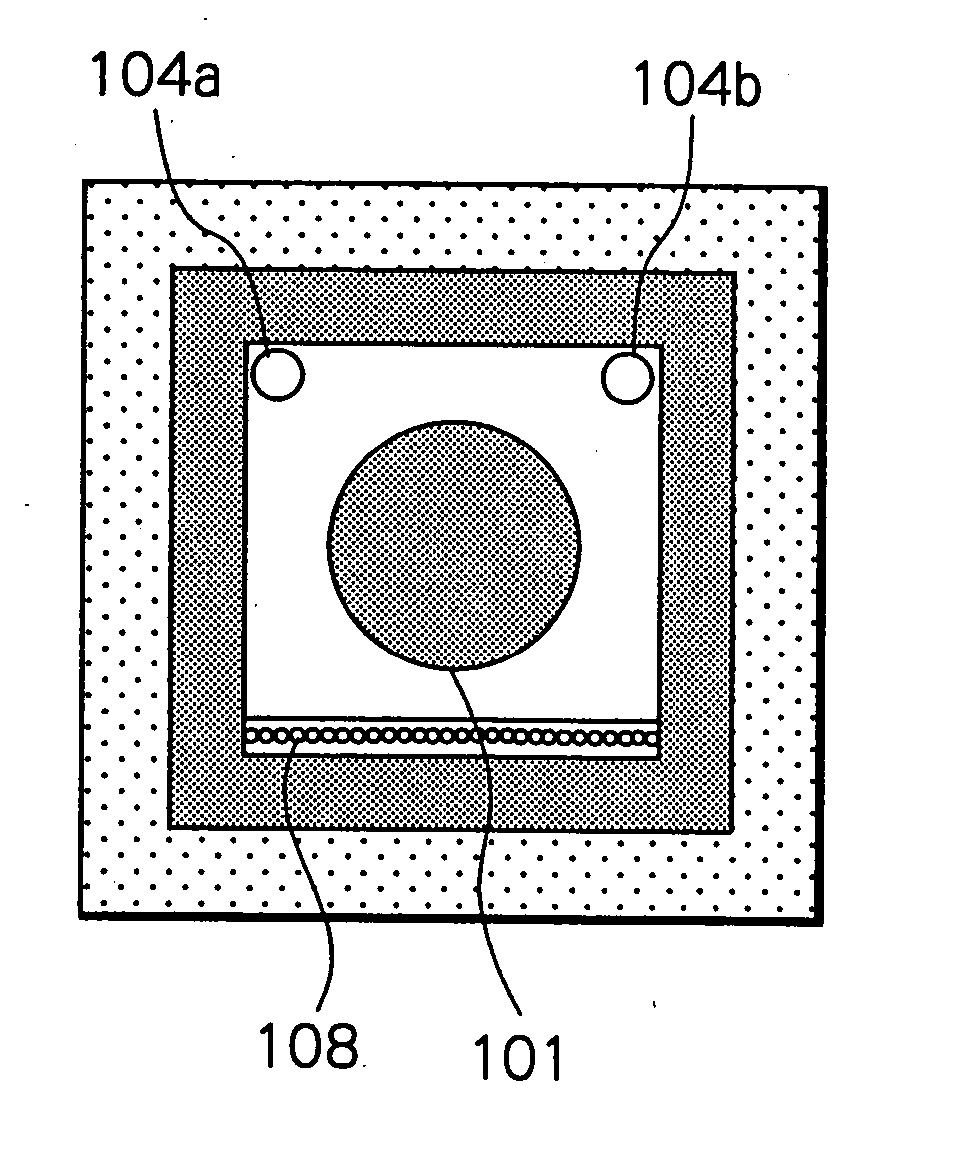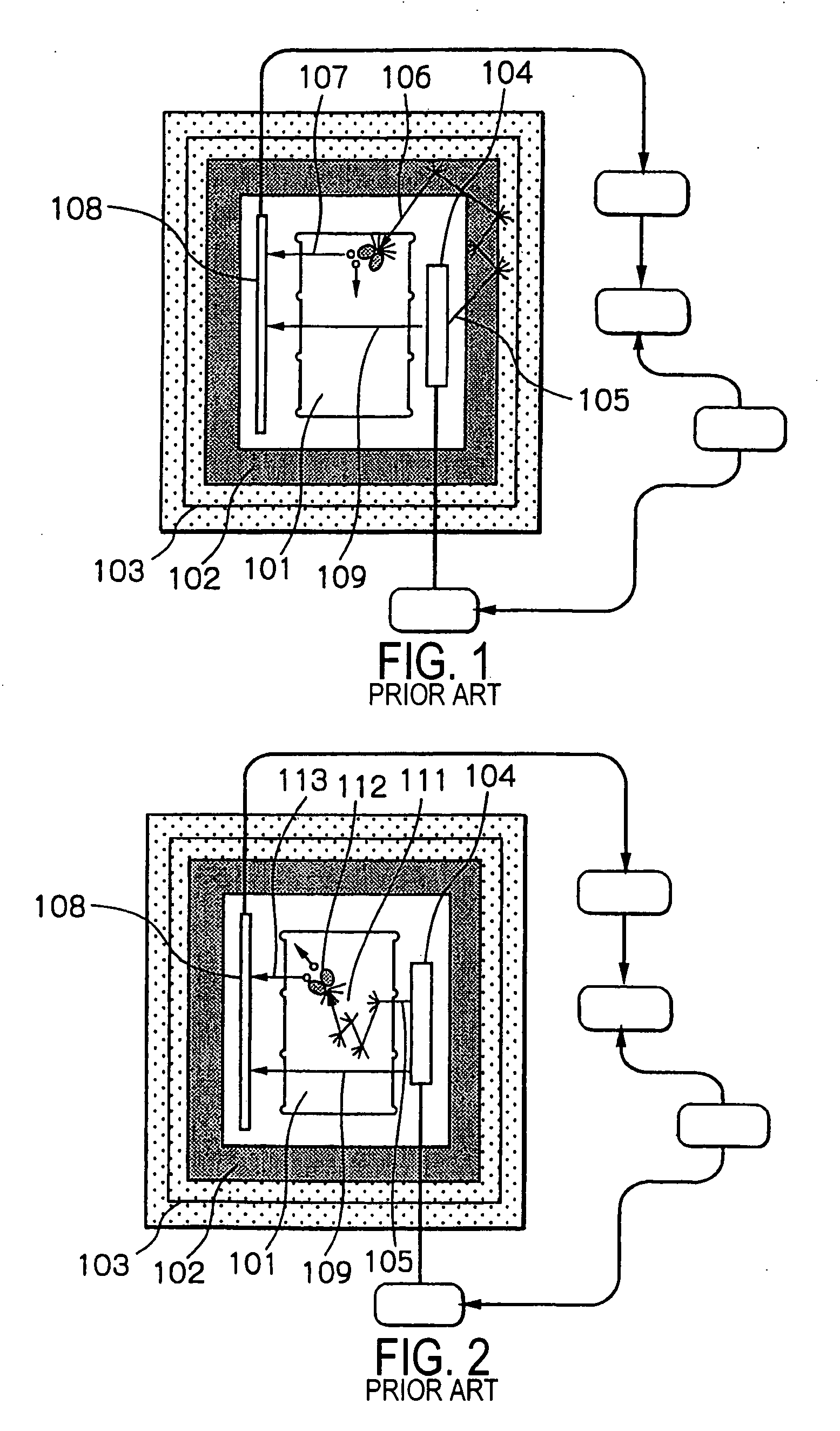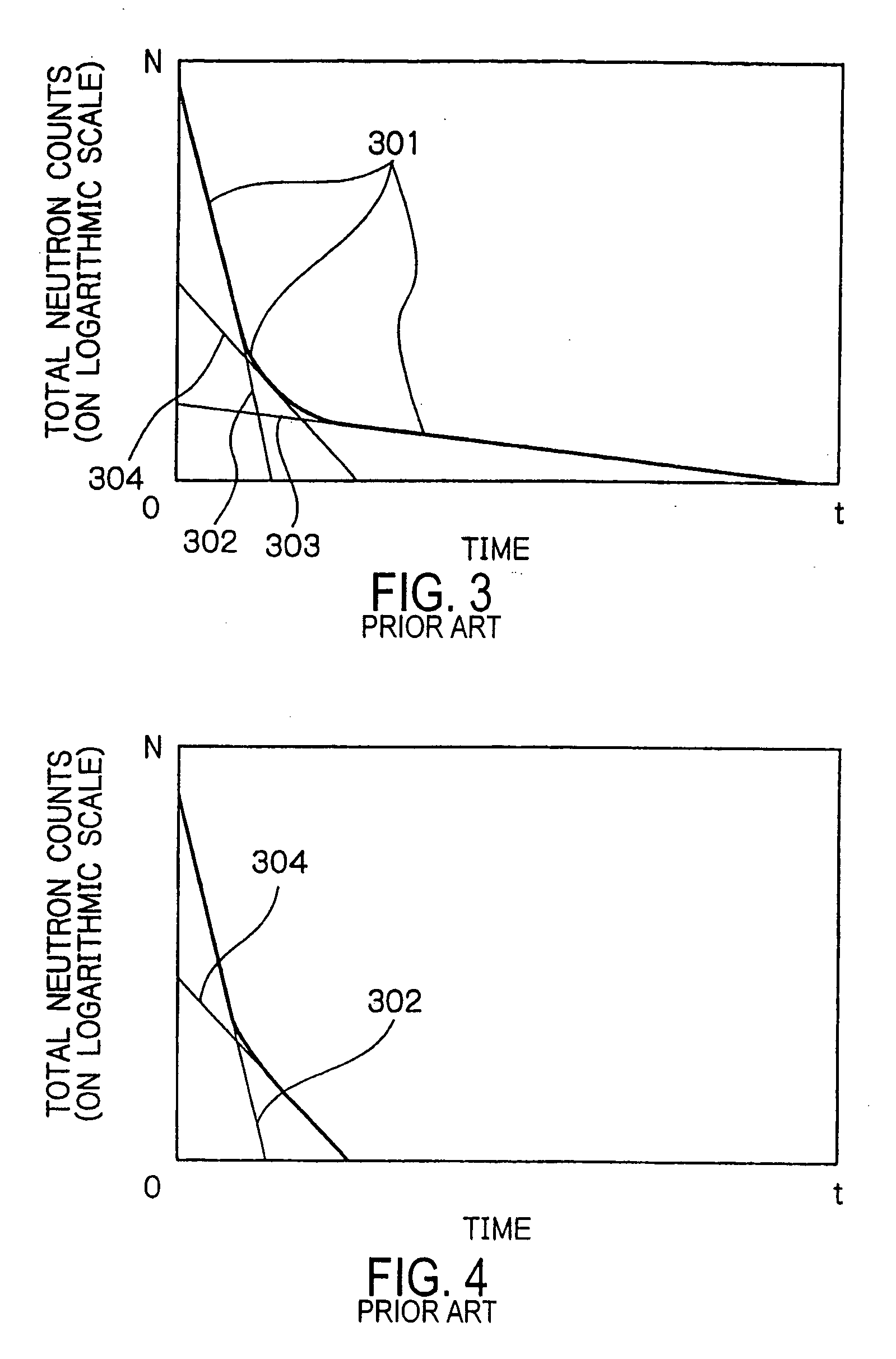Apparatus for nondestructive measurement of fissle materials in solid radioactive wastes
a technology of solid radioactive waste and detector, which is applied in the direction of instruments, nuclear elements, greenhouse gas reduction, etc., can solve the problems of insufficient precision in fissile nuclides determination, not as effectively admitted into the core areas, etc., and achieve the effect of reducing or eliminating unwanted counts, facilitating selective isolation of target counts, and increasing the probability of target counts
- Summary
- Abstract
- Description
- Claims
- Application Information
AI Technical Summary
Benefits of technology
Problems solved by technology
Method used
Image
Examples
example 1
[0071]FIG. 20 shows a model for simulation by the Monte Carlo method that is intended to implement the first and fourth means of solving the problems of the prior art, thereby demonstrating their effectiveness. The wall surrounding the space of measurement in a model for the system of measurement by the active neutron method was built with iron (Fe) and a solid radioactive waste to be analyzed was placed in the space defined by two neutron generating tubes and 28 He-3 detectors.
[0072] In the simulation by the Monte Carlo method, as in the experiment of measurement described in JP 11-64528 A, a plutonium radiation source 1201 simulating the fissile material in the solid radioactive waste to be analyzed was placed in the concrete-filled drum 202 and moved through a hole from the center 1203 outward to the surface at 2.5-cm intervals. At the individual positions of the movement, about 20,000,000 fast neutrons having an energy of 14 MeV were emitted from neutron generating tubes 104a a...
example 2
[0078] In the second means of solving the problems, the fast neutron reflector surrounding the solid radioactive waste under analysis in the apparatus as the first means of solving the problems which intends to perform nondestructive measurement of fissile materials in the solid waste is built with lead or an alloy thereof.
[0079]FIG. 23 shows a specific example of this second means of solving the problems by using lead. The system is identical to the detector shown in FIG. 1 which performs measurement by the active neutron method, except that the neutron moderator 102 which is either graphite, polyethylene or boron-doped polyethylene is eliminated from the neutron moderating reflector unit and that the drum 101 containing the solid radioactive waste under analysis, the neutron generating tubes 104a and 104b, and the He-3 detectors 108a and 108b are enclosed solely with a reflector 1102 made of lead or its alloy. Given very small ability of the lead alloy to slow down fast neutrons,...
example 3
[0080] In the third means of solving the problems, the fast neutron reflector surrounding the solid radioactive waste under analysis in the apparatus as the first means of solving the problems which intends to perform nondestructive measurement of fissile materials in the solid waste is built with a zirconium alloy.
[0081]FIG. 24 shows a specific example of this third means of solving the problems by using zirconium. The drum 101 containing the solid radioactive waste under analysis, the neutron generating tubes 104a and 104b, and the He-3 detectors 108a and 108b are enclosed solely with a reflector 1103 made of zirconium or its alloy. Zirconium or its alloys are as good reflectors of fast neutrons as iron and lead but their ability to slow down fast neutrons is very small; hence, the proportion of the unwanted neutron count due to the thermal neutrons that are admitted from the outside into the solid radioactive waste to cause nuclear fission is drastically reduced. As a result, th...
PUM
 Login to View More
Login to View More Abstract
Description
Claims
Application Information
 Login to View More
Login to View More - R&D
- Intellectual Property
- Life Sciences
- Materials
- Tech Scout
- Unparalleled Data Quality
- Higher Quality Content
- 60% Fewer Hallucinations
Browse by: Latest US Patents, China's latest patents, Technical Efficacy Thesaurus, Application Domain, Technology Topic, Popular Technical Reports.
© 2025 PatSnap. All rights reserved.Legal|Privacy policy|Modern Slavery Act Transparency Statement|Sitemap|About US| Contact US: help@patsnap.com



